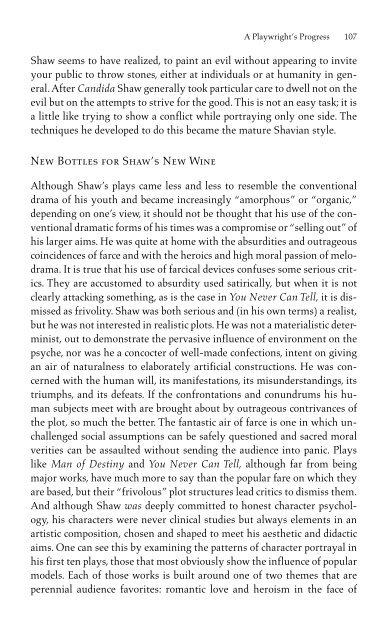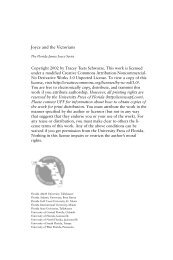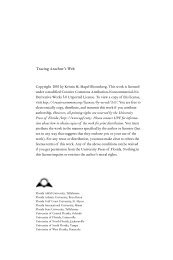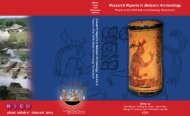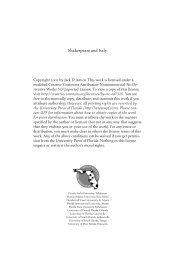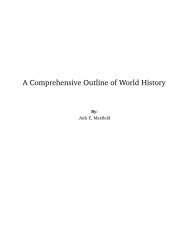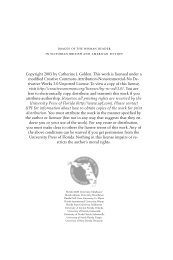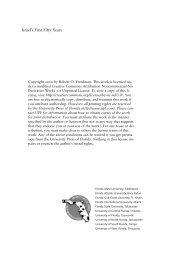Bernard Shaw's Remarkable Religion: A Faith That Fits the Facts
Bernard Shaw's Remarkable Religion: A Faith That Fits the Facts
Bernard Shaw's Remarkable Religion: A Faith That Fits the Facts
You also want an ePaper? Increase the reach of your titles
YUMPU automatically turns print PDFs into web optimized ePapers that Google loves.
A Playwright’s Progress 107<br />
Shaw seems to have realized, to paint an evil without appearing to invite<br />
your public to throw stones, ei<strong>the</strong>r at individuals or at humanity in general.<br />
After Candida Shaw generally took particular care to dwell not on <strong>the</strong><br />
evil but on <strong>the</strong> attempts to strive for <strong>the</strong> good. This is not an easy task; it is<br />
a little like trying to show a conflict while portraying only one side. The<br />
techniques he developed to do this became <strong>the</strong> mature Shavian style.<br />
New Bottles for Shaw’s New Wine<br />
Although Shaw’s plays came less and less to resemble <strong>the</strong> conventional<br />
drama of his youth and became increasingly “amorphous” or “organic,”<br />
depending on one’s view, it should not be thought that his use of <strong>the</strong> conventional<br />
dramatic forms of his times was a compromise or “selling out” of<br />
his larger aims. He was quite at home with <strong>the</strong> absurdities and outrageous<br />
coincidences of farce and with <strong>the</strong> heroics and high moral passion of melodrama.<br />
It is true that his use of farcical devices confuses some serious critics.<br />
They are accustomed to absurdity used satirically, but when it is not<br />
clearly attacking something, as is <strong>the</strong> case in You Never Can Tell, it is dismissed<br />
as frivolity. Shaw was both serious and (in his own terms) a realist,<br />
but he was not interested in realistic plots. He was not a materialistic determinist,<br />
out to demonstrate <strong>the</strong> pervasive influence of environment on <strong>the</strong><br />
psyche, nor was he a concocter of well-made confections, intent on giving<br />
an air of naturalness to elaborately artificial constructions. He was concerned<br />
with <strong>the</strong> human will, its manifestations, its misunderstandings, its<br />
triumphs, and its defeats. If <strong>the</strong> confrontations and conundrums his human<br />
subjects meet with are brought about by outrageous contrivances of<br />
<strong>the</strong> plot, so much <strong>the</strong> better. The fantastic air of farce is one in which unchallenged<br />
social assumptions can be safely questioned and sacred moral<br />
verities can be assaulted without sending <strong>the</strong> audience into panic. Plays<br />
like Man of Destiny and You Never Can Tell, although far from being<br />
major works, have much more to say than <strong>the</strong> popular fare on which <strong>the</strong>y<br />
are based, but <strong>the</strong>ir “frivolous” plot structures lead critics to dismiss <strong>the</strong>m.<br />
And although Shaw was deeply committed to honest character psychology,<br />
his characters were never clinical studies but always elements in an<br />
artistic composition, chosen and shaped to meet his aes<strong>the</strong>tic and didactic<br />
aims. One can see this by examining <strong>the</strong> patterns of character portrayal in<br />
his first ten plays, those that most obviously show <strong>the</strong> influence of popular<br />
models. Each of those works is built around one of two <strong>the</strong>mes that are<br />
perennial audience favorites: romantic love and heroism in <strong>the</strong> face of


